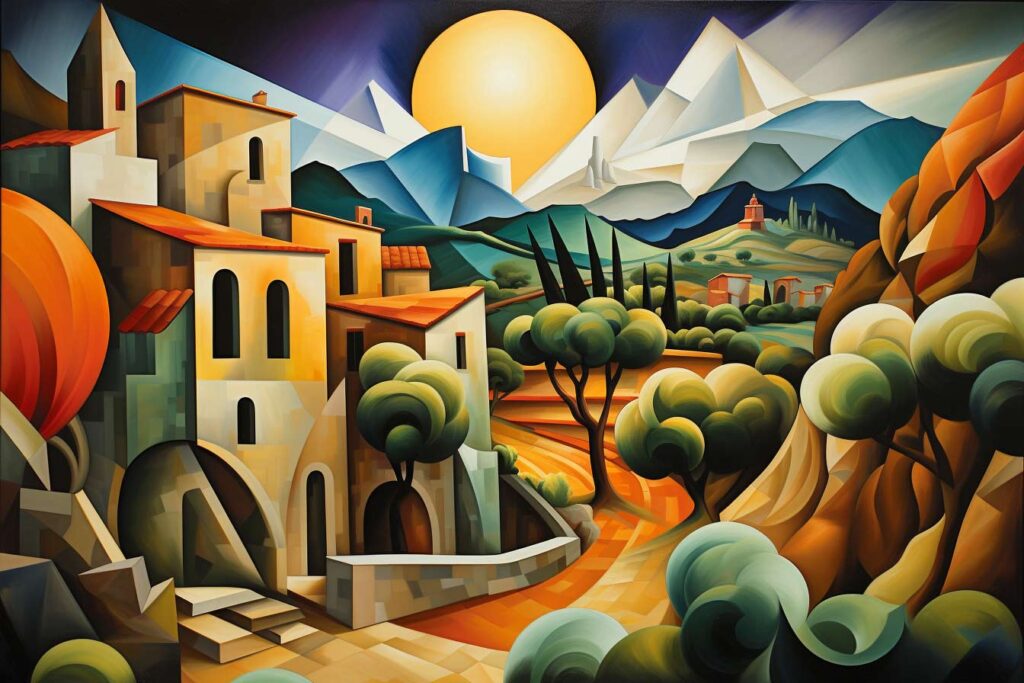Decomposed Nature: Geometric Fragmentation of Classic Landscapes
In the heart of every true admirer of nature lies an insatiable yearning to understand and capture its multifaceted beauty. With the advent of Cubism, this quest takes a turn less travelled, where the bucolic serenity of landscapes is not merely represented but is dissected, fragmented, and recomposed in a symphony of geometric shapes. This is not an act of defilement, but one of profound reverence — a quest to unravel the myriad layers that lie beneath the visible.
The Art of Decomposition
Decomposition, in this context, is far from its typical connotation of decay or decline. Instead, it becomes an act of deliberate and thoughtful segmentation, a journey into the very soul of the subject. Be it the sprawling majesty of a mountain or the gentle sway of a tree, each element is rendered into its essential geometric forms, allowing the beholder to view nature through a different prism.
From Wholeness to Fragmentation and Back
There exists a sublime paradox in this artistic approach. By breaking down the whole, one might expect a loss of coherence, a sacrifice of the greater picture. However, in the hands of the Cubist artist, this fragmentation serves to amplify the core essence of the subject. When the disparate geometric fragments are pieced together, not in a literal reconstruction but in an abstract representation, the atmosphere, mood, and spirit of the original masterpiece emerge more potent than ever.
Preserving Essence Amidst Change
The true brilliance of geometric decomposition lies not in the act of dissection but in the preservation of the subject’s intrinsic aura. While the external form undergoes a metamorphosis, the core essence remains untouched, perhaps even enhanced. A tree, though presented in angular facets, still whispers tales of the wind, and a mountain, though delineated by stark lines and planes, still stands as a testament to timeless majesty.
Conclusion
To embrace the art of geometric decomposition in the portrayal of nature is to embark on a journey of deeper understanding. It is to acknowledge that beauty is not merely skin-deep but layered, complex, and multifaceted. Through the lens of Cubism, classic landscapes are not just seen but truly experienced, revealing the boundless depths that lie beneath their surface allure.

